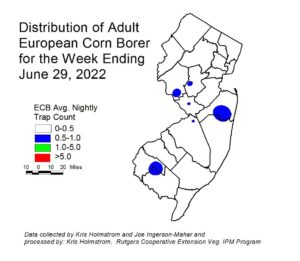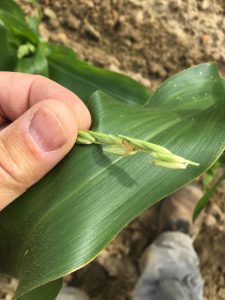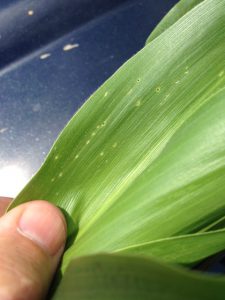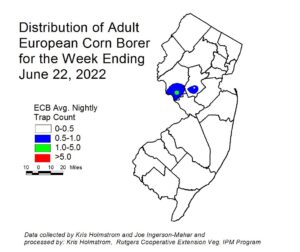Sweet Corn – Fall Armyworm
As of Wednesday (7/27) evening, significant fall armyworm (FAW) infestations were found in whorl stage sweet corn in Cape May County. These infestations were nearing 50% of plants infested, and are an indication that all sweet corn growers in southern NJ should be checking fields regularly for signs of FAW feeding. This pest often hits earliest and hardest in coastal areas, and new infestations have been detected up the coast to Monmouth County. Northern infestations have been much lower, and very recent.
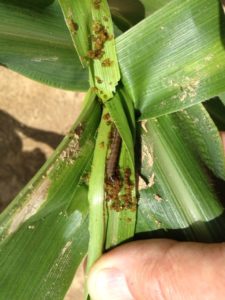 Look for extensive foliar feeding in sweet corn ranging from seedling to pre-tassel stage. FAW create large volumes of droppings that often cover larvae while feeding in the whorl. Untreated infestations can result in severely stunted plants. Consider treating when FAW feeding alone, or in combination with European corn borer exceeds 12%. Insecticides in the IRAC 28 class (diamides) and IRAC 5 class (spinosyns) work well against FAW.
Look for extensive foliar feeding in sweet corn ranging from seedling to pre-tassel stage. FAW create large volumes of droppings that often cover larvae while feeding in the whorl. Untreated infestations can result in severely stunted plants. Consider treating when FAW feeding alone, or in combination with European corn borer exceeds 12%. Insecticides in the IRAC 28 class (diamides) and IRAC 5 class (spinosyns) work well against FAW.
